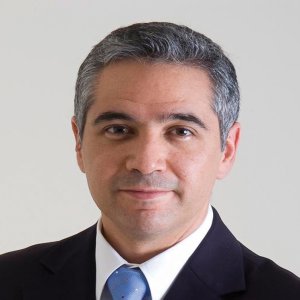High Hopes for Nationwide Fleet Renewal

STORY INLINE POST
The bus and microbus fleets of Mexico City’s metropolitan area are the true dinosaurs of the streets. Many have exceeded their life expectancy of seven years and the most recent models go back to 1994 and still cruise freely every day. Eugenio Paci, President of the Automotive Industry Sector of CANACINTRA, views these buses as a perfect example of the necessity for fleet renewal program. Positioned as the most influential industrial chamber in Mexico, with excellent relations with the three levels of the Mexican government thanks to its 50,000 members across 13 industrial sectors, CANACINTRA is a pioneer in the fleet renewal scrapping program. “For the past 12 years we have worked hard in lobbying and drafting new regulations and bills that will help drive the scrapping program and the renewal program. This year there are high hopes they will pass,” states Paci.
The program was first published in CANACINTRA’s Federal Register in 2004 by former president Vicente Fox and ten years later, 34,000 to 35,000 trucks were scrapped. “At the beginning, we forecasted 10,000 trucks and buses per year, so the overall rate of scrapping units has been quite low. This provided real impetus for major changes to be made to the program,” Paci explains. This program offers motor carrier companies and single owner-operators fiscal incentives of approximately US$15,000 for each truck they scrap. With this incentive they can then visit CANACINTRA’s dealerships and use the Scrapping Certificate (official incentive document) as a down payment for a new truck. CANACINTRA agreed with the Treasury and the Ministry of Communications and Transportation on a new program that will target small carriers with between one to five trucks and single owner-operators. “With this refreshed program, if they scrap two trucks they get a double fiscal incentive of US$30,000,” Paci details. “If an owner-operator of five trucks scraps two, he will obtain US$30,000 that can be used either to pay for 30% of a down payment for a new truck or make a 50% down payment for a five or six year old used truck with better financial conditions,” he adds. Paci admits that to a certain extent, the Treasury is taking a cautious approach to increasing the fiscal incentives, as it does not see it as a viable recoverable investment in the short term. To encourage this program, CANACINTRA worked alongside other associations like ANPACT, ANTP, and CANACAR in compiling hard facts and numbers to present a strong case to the Treasury. “We showed that if it provided a fiscal incentive of US$30,000 it would gain US$15,000 for every truck that is scrapped in VAT,” Paci states. “Our data shows there are 150,000 trucks to be renewed by the Ministry of Communications and Transportation and over 300,000 across Mexico with local license plates, so this represents a large revenue stream.”
A slow movement toward fleet renewal in major markets such as Mexico City and the State of Mexico is creating a snowball effect that has driven renewal in other states. CANACINTRA itself has begun similar schemes in other states like Guanajuato, Aguascalientes, and Veracruz. The chamber, on behalf of the automotive sector, has drafted state financing incentives where the government, OEMs, body builders, and other suppliers all invest some money. “If Guanajuato invests MX$500 million (US$38 million) for the renewal scrapping program and offers MX$100,000 (US$7,700) for each bus or truck, while automotive companies and body builders jointly provide another MX$100,000, the fiscal incentive will reach MX$200,000. Nobody will have an excuse not to renew their old vehicles. This scenario means 5,000 units can be renewed,” Paci explains. OEMs are also independently pushing for renovation. After lobbying for 25 months, Navistar finally succeeded in renewing Veracruz’s scrapping program. Paci adds that although the government normally favors investing in more visible projects, providing optimum public transport to citizens is far more beneficial. “The second biggest expense for a Mexican household is transport. The renewal of public transport fleets, although less flamboyant, garners more votes for political parties.”
The lack of norms has also opened the doors to companies that do not comply with regulations. Such unregulated companies enter the market with their own brand but do not have the secure backing of spare parts, upkeep, and maintenance service. To a certain extent their entry has hindered the renewal of trucks and buses in Mexico City. Additionally, it has affected other links in the supply chain. Brake companies are concerned by the entry of Asian brake parts that are sold for one-third of the regular price. These unsavory experiences have left operators wanting more quality assurances and price certainty. Paci is swift to point out that CANACINTRA supports the entry of Asian companies as long as they invest, comply with regulations, and offer aftermarket support. While facing twists and turns on the road, Paci is certain CANACINTRA will continue to be the flagship of change. “We will continue to support norms and fleet renewal. While it might seem like a large investment, it will have a great impact on the lives of all Mexicans.”



















